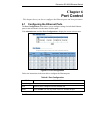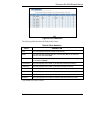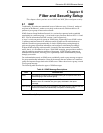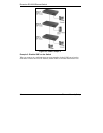
Dimension ES-2008 Ethernet Switch
Port Trunking 7-1
Chapter 7
Port Trunking
This chapter describes how to configure trunk groups and IEEE 802.3ad link
aggregation.
7.1 Introduction
Port Trunking (or link aggregation) lets you group physical ports into one logical high-
capacity link. It may be more cost-effective to group multiple lower-speed ports than to
under-utilize a higher-speed, but more costly, port.
However, the more ports you aggregate, the higher bandwidth capacity you obtain, but the
fewer available ports you have.
7.1.1 Trunk Groups
Trunk groups are manually configured aggregate links containing multiple ports.
7.1.2 Dynamic Port Trunking
The switch supports IEEE 802.3ad standard for port trunking. This standard describes the
Link Aggregate Control Protocol (LACP), which is a protocol that allows a switch to
dynamically create and manage trunk groups.
When you enable LACP trunking on a port, the port can automatically negotiate with the
ports at the remote end of a link to establish trunk groups.
Besides dynamic trunking, LACP provides port redundancy. When an operational port
fails, one of the “standby” ports becomes operational without user intervention.
7.1.3 Requirements
When you configure the settings, note the following points.
1. You cannot add a port to a trunk group if LACP is enabled on the port.
2. You must connect all ports point-to-point to the same Ethernet device and
configure them for LACP trunking if required.
3. LACP only works on full-duplex links.
4. All ports on the same trunk group must have the same media type, speed, duplex
mode and flow control settings.
5. Configure trunk groups or LACP before you connect the Ethernet device to
prevent network topology loops.


















